Abstract
A randomized, controlled, malaria-clinic-based field trial was conducted to compare compliance with a 7-day quinine + tetracycline regimen and a 5-day 700-mg artesunate regimen for the treatment of uncomplicated falciparum malaria in a community in Thailand. Of 137 patients, aged 15-60 years attending a malaria clinic, 77 received artesunate and 60 received quinine + tetracycline. Compliance and cure rates were evaluated on days 5 (artesunate) and 7 (quinine + tetracycline) using patient interview/residual pill counts and peripheral blood smear, respectively. Data were analysed using the intention-to-treat approach, and the reasons for compliance and noncompliance were investigated. Compliance was significantly higher (98.4%) with artesunate than with quinine + tetracycline (71.7%) (relative risk adjusted for sex (aRR) = 1.39 (95% C.I. = 1.15-1.68); referent: quinine + tetracycline). Cure rate (100%) was higher in those receiving artesunate than quinine + tetracycline (77.4%) (aRR = 1.32 (95% C.I. = 1.12-1.55)). Reasons for compliance included the desire to be cured and to follow the advice of malaria staff/employer, and the simple dosing regimen. Noncompliance was mostly due to adverse reactions and forgetting to take the drugs. These results can serve as a baseline for designing and evaluating new interventions to improve compliance, as well as for studying cost-effectiveness to help drug policy decision-making. We recommend a strategy which integrates a short-course, once-a-day regimen (with minimal adverse reactions), a better delivery system for antimalarial drugs and health education, and an enhanced advisory role of malaria staff. Considering the higher compliance rate and curative effectiveness of artesunate, we recommend its use instead of quinine + tetracycline for the treatment of uncomplicated malaria in clinics in Thailand.
Full text
PDF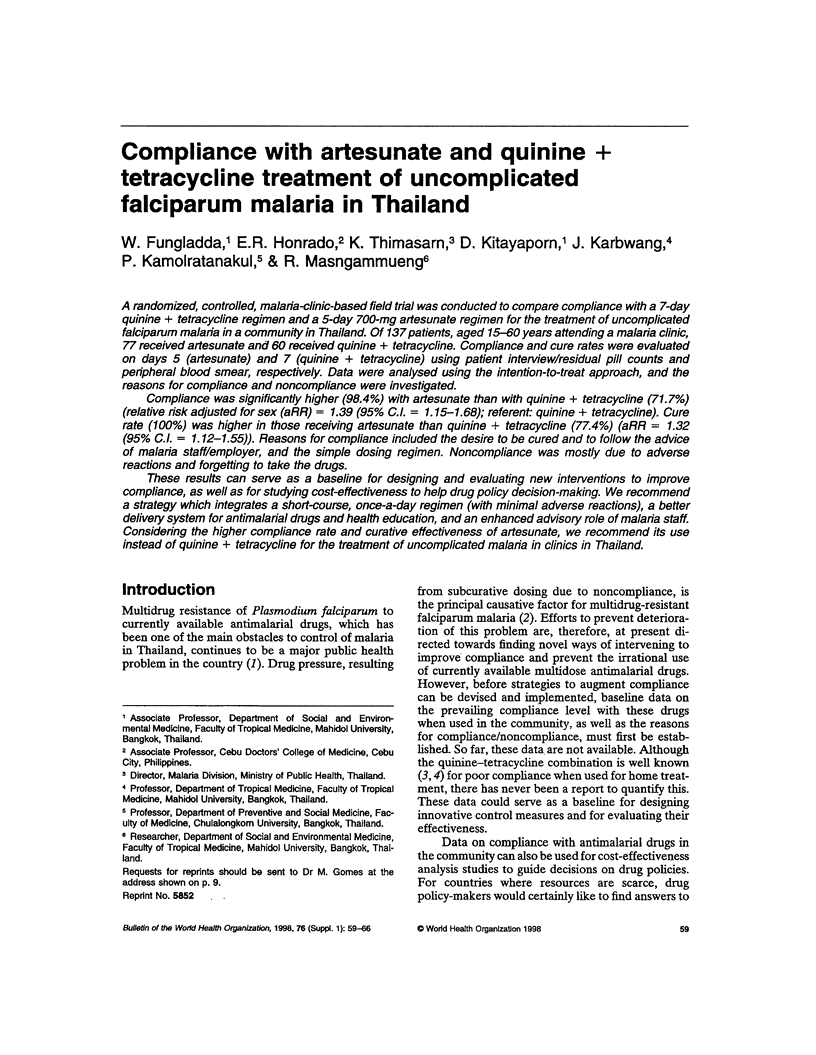
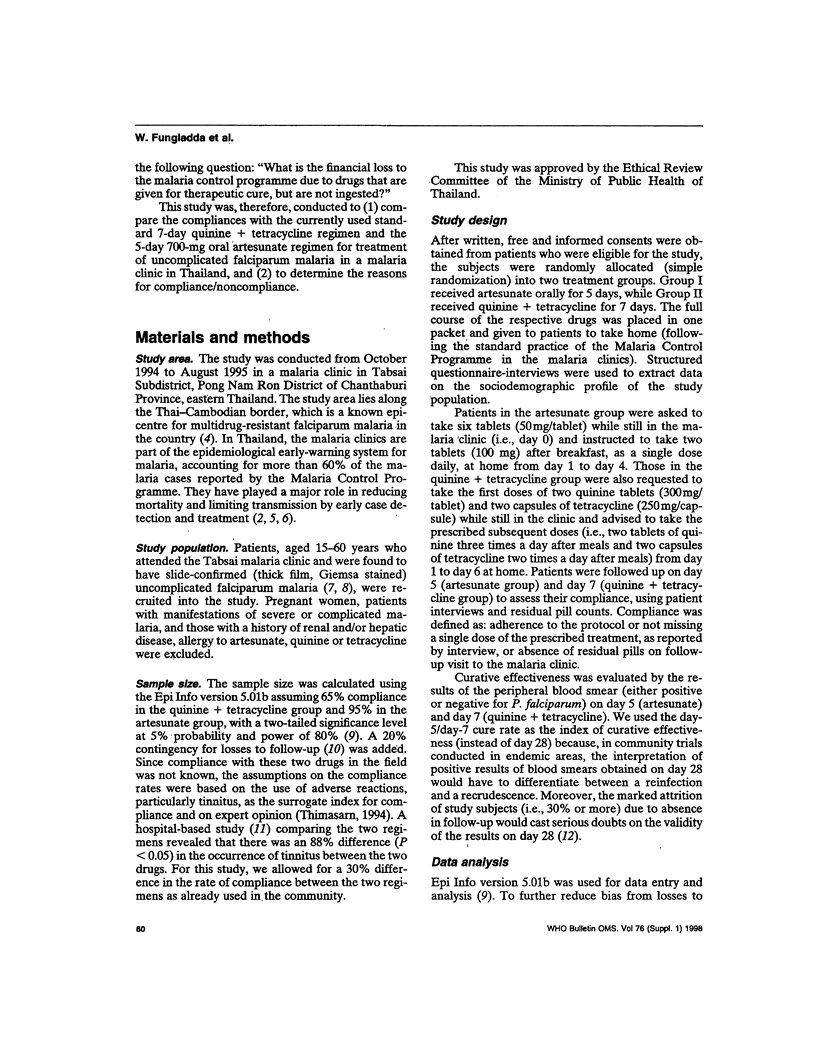
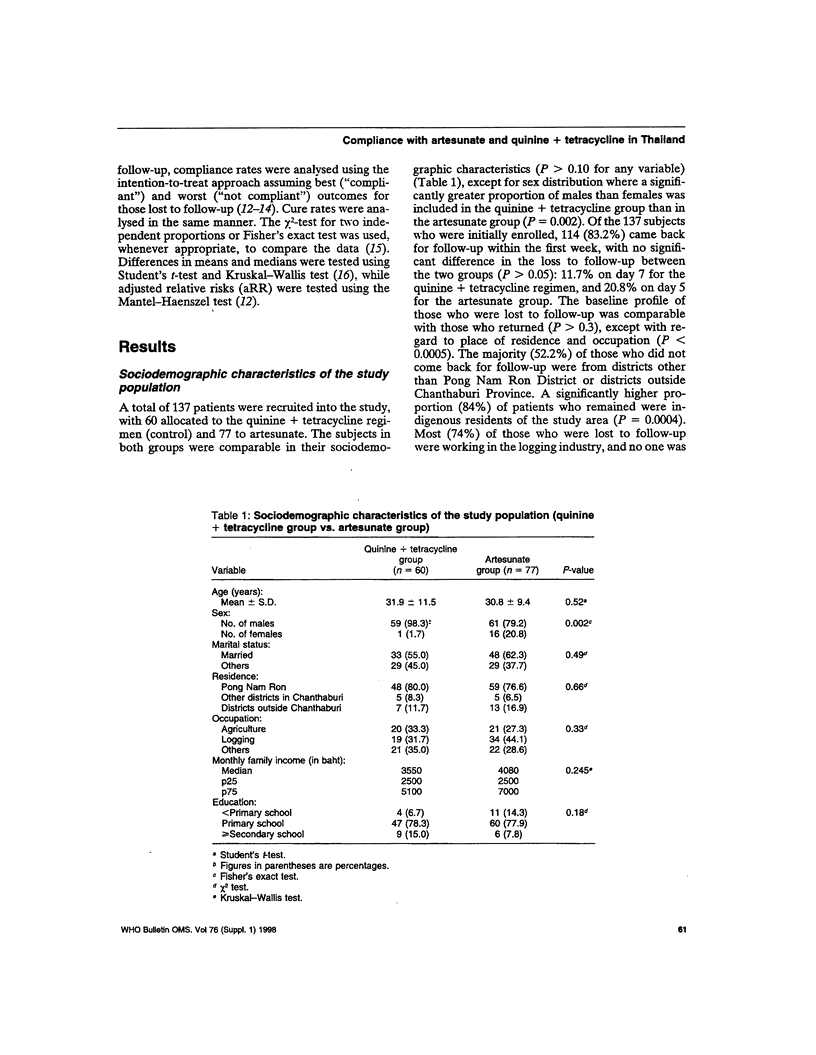
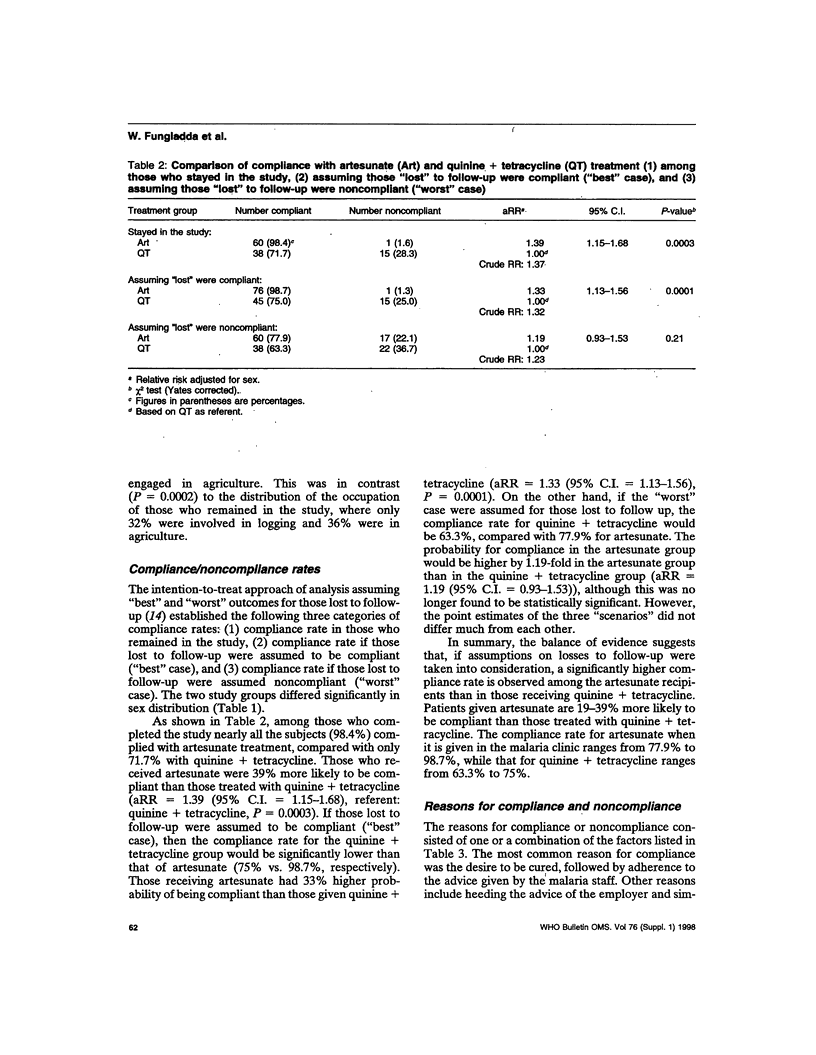
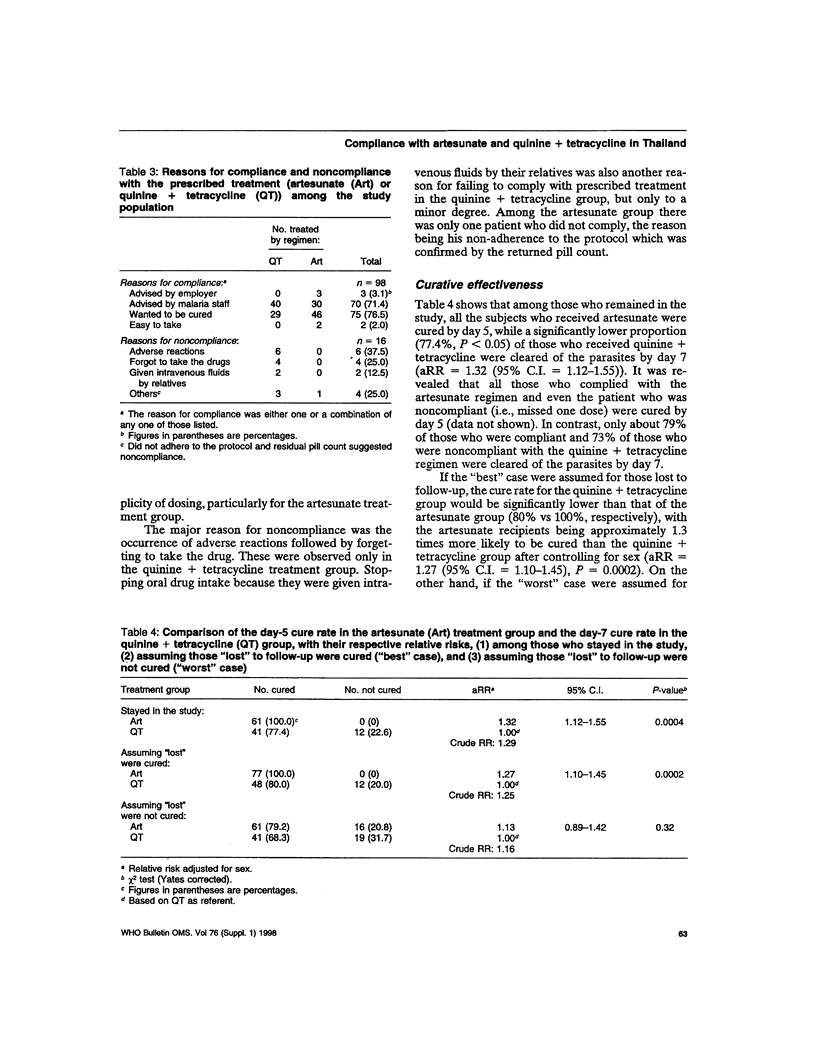
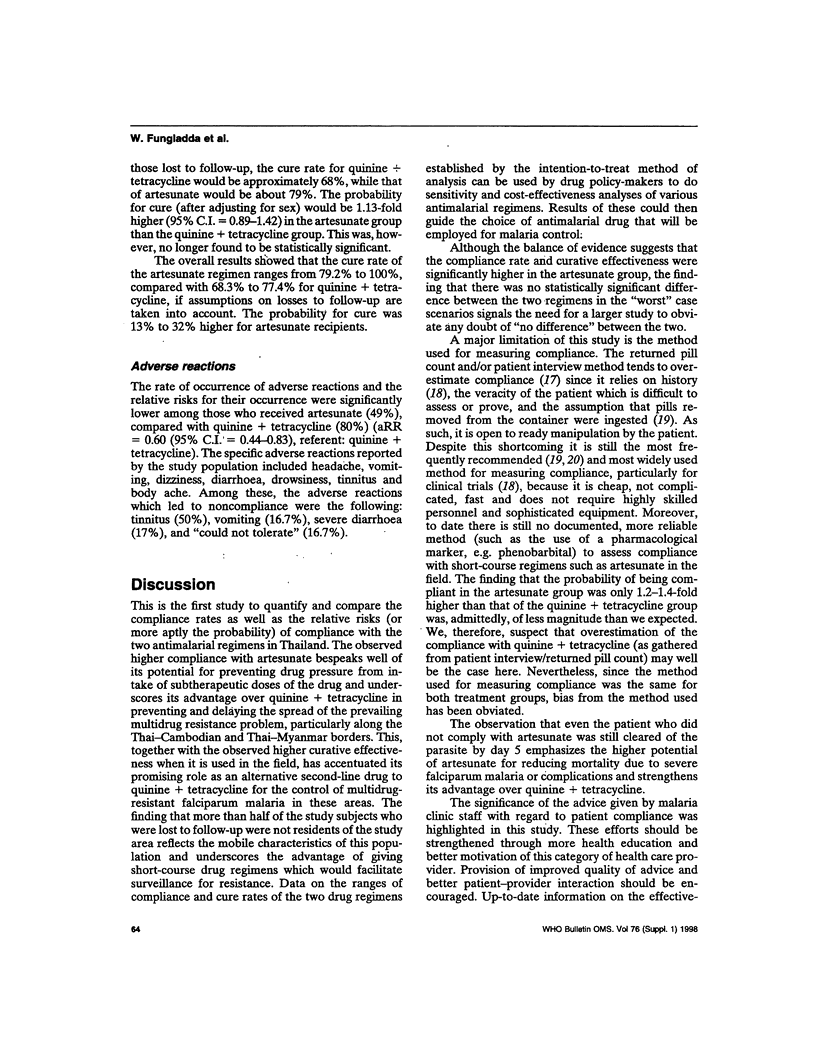
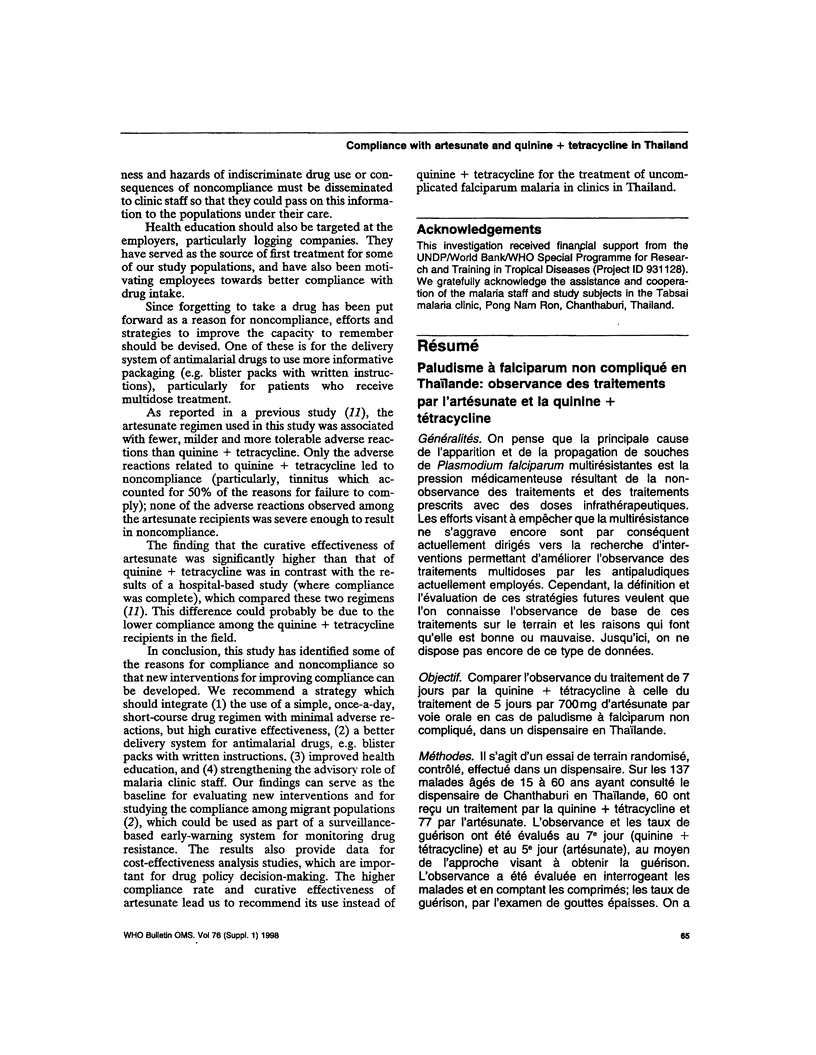
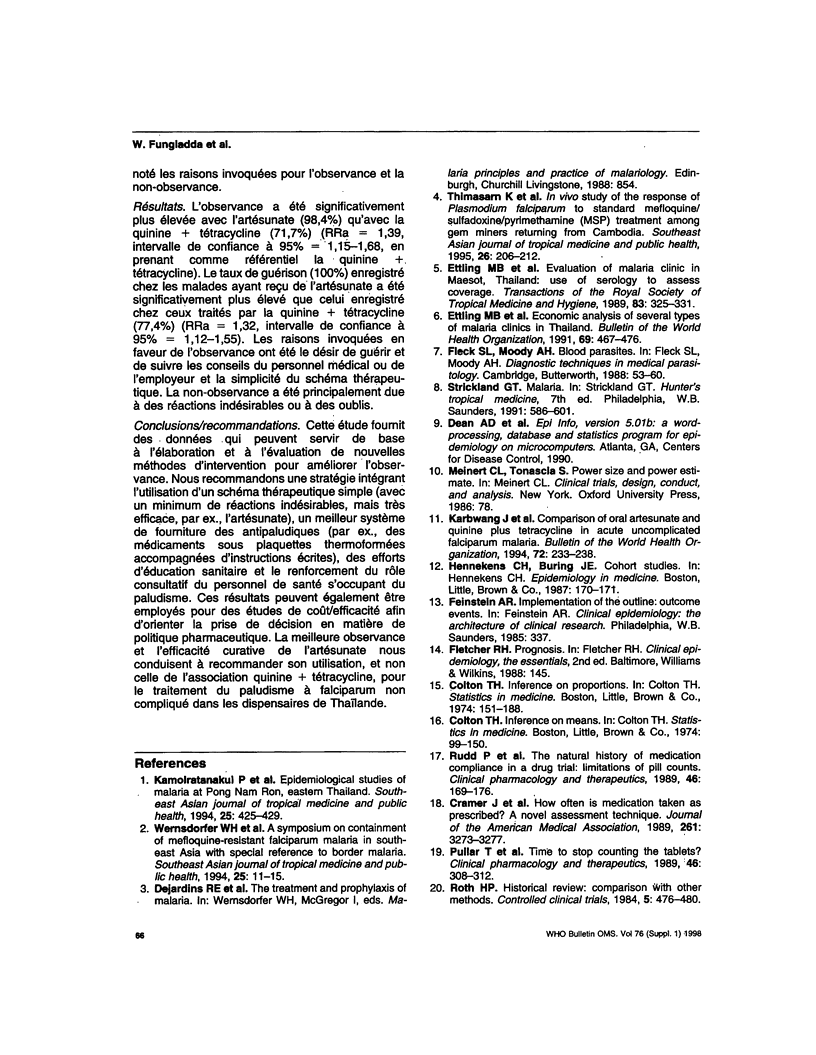
Selected References
These references are in PubMed. This may not be the complete list of references from this article.
- Cramer J. A., Mattson R. H., Prevey M. L., Scheyer R. D., Ouellette V. L. How often is medication taken as prescribed? A novel assessment technique. JAMA. 1989 Jun 9;261(22):3273–3277. [PubMed] [Google Scholar]
- Ettling M. B., Thimasarn K., Krachaiklin S., Bualombai P. Evaluation of malaria clinics in Maesot, Thailand: use of serology to assess coverage. Trans R Soc Trop Med Hyg. 1989 May-Jun;83(3):325–330. doi: 10.1016/0035-9203(89)90489-6. [DOI] [PubMed] [Google Scholar]
- Ettling M. B., Thimasarn K., Shepard D. S., Krachaiklin S. Economic analysis of several types of malaria clinics in Thailand. Bull World Health Organ. 1991;69(4):467–476. [PMC free article] [PubMed] [Google Scholar]
- Kamolratanakul P., Dhanamun B., Lertmaharit S., Seublingwong T., Udomsangpetch R., Thaithong S. Epidemiological studies of malaria at Pong Nam Ron, eastern Thailand. Southeast Asian J Trop Med Public Health. 1994 Sep;25(3):425–429. [PubMed] [Google Scholar]
- Karbwang J., Na-Bangchang K., Thanavibul A., Bunnag D., Chongsuphajaisiddhi T., Harinasuta T. Comparison of oral artesunate and quinine plus tetracycline in acute uncomplicated falciparum malaria. Bull World Health Organ. 1994;72(2):233–238. [PMC free article] [PubMed] [Google Scholar]
- Roth H. P. Historical review: comparison with other methods. Control Clin Trials. 1984 Dec;5(4 Suppl):476–480. doi: 10.1016/0197-2456(84)90007-2. [DOI] [PubMed] [Google Scholar]
- Rudd P., Byyny R. L., Zachary V., LoVerde M. E., Titus C., Mitchell W. D., Marshall G. The natural history of medication compliance in a drug trial: limitations of pill counts. Clin Pharmacol Ther. 1989 Aug;46(2):169–176. doi: 10.1038/clpt.1989.122. [DOI] [PubMed] [Google Scholar]


